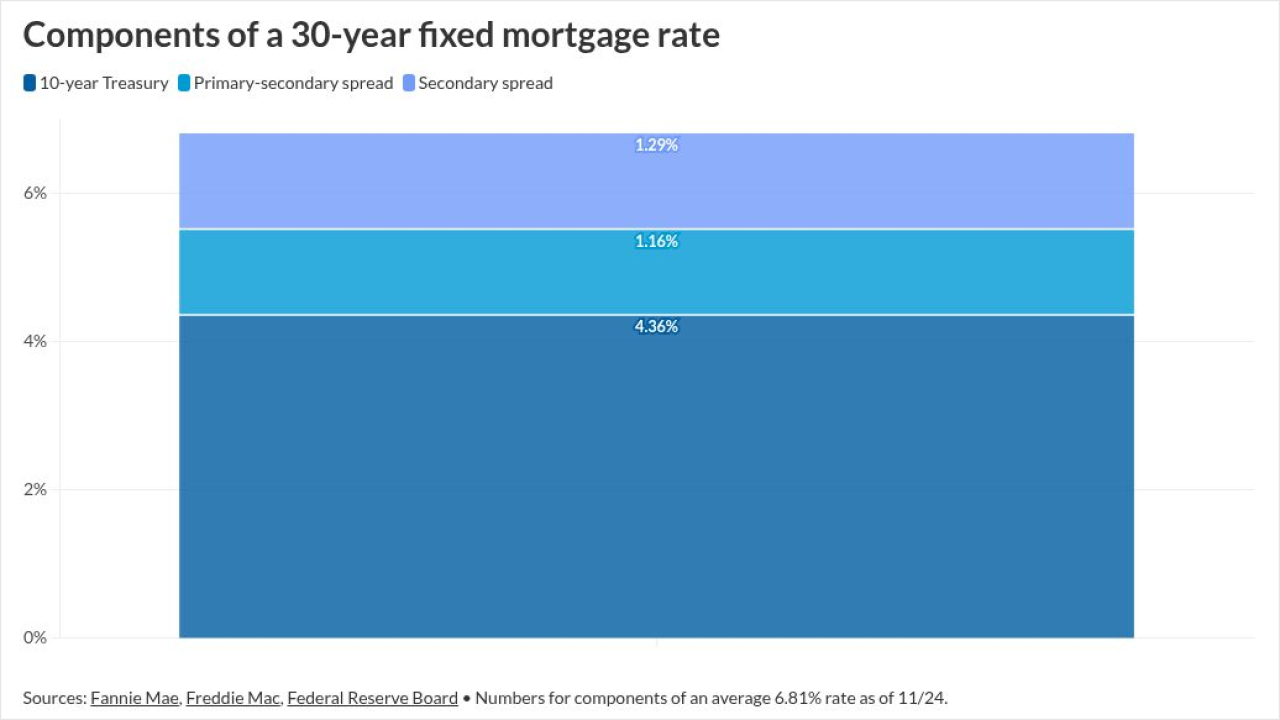While the Federal Reserve plays an influential role in the broader interest rate environment, the reality is more nuanced. Mortgage rates, particularly for consumers, aren't set by the Fed. Instead, they're primarily influenced by market forces.
In an era of persistent rate volatility and heightened borrower sensitivity, it's more important than ever to understand what truly moves mortgage rates. This article unpacks the mechanisms behind rate movement, debunks common misconceptions, and offers clarity for borrowers, lenders, and housing professionals navigating today's mortgage landscape.
The Influence of the Federal Reserve
Let's start by clearing up the most common myth: the Federal Reserve does not directly set mortgage rates. What it does control is the federal funds rate, which is the overnight rate banks charge each other to lend reserves. While that benchmark influences short-term rates such as credit card APRs and home equity lines of credit (HELOCs), it's only one factor in the mortgage rate equation.
When the Fed raises or lowers the federal funds rate, it sends a signal to the markets about its view of inflation, growth, and future policy direction. These signals ripple through financial markets, influencing investor sentiment and demand for long-term securities—including mortgage-backed securities. But the Fed's rate decisions are a guidepost, not a price tag.
Mortgage-Backed Securities
Mortgage rates are largely determined by the pricing of mortgage-backed securities (MBS). These are bundles of home loans that are sold to investors, most often through government-sponsored enterprises like Fannie Mae and Freddie Mac.
Here's how the process works: once a lender originates a mortgage, they often sell it to the secondary market, where it gets packaged into an MBS. Investors who buy those securities expect a certain yield—essentially, a return on their investment. If demand for MBS is high, yields can fall, and mortgage rates tend to follow. If demand wanes, yields rise, and mortgage rates increase in tandem.
This dynamic means that mortgage rates can change daily—sometimes even several times in a single day—based on MBS trading activity. That's why rates can shift even when the Fed hasn't made a move.
Investor Sentiment and Economic Data
MBS pricing is also influenced by how investors feel about broader economic trends. For example, if investors anticipate a slowdown or recession, they often move money into safer assets like U.S. Treasuries and agency MBS, driving prices up and yields (and mortgage rates) down.
On the other hand, strong jobs reports, unexpected inflation data, or hawkish Fed commentary can sour investor appetite for MBS. These shifts in sentiment happen in real time, meaning that mortgage rates may react to economic data or headlines within hours—not weeks.
In 2025, as the market remains hypersensitive to inflation expectations, employment data, and geopolitical risk, we're seeing increased volatility in MBS pricing. This makes rate prediction even trickier—and underscores the importance of real-time market awareness for lenders and borrowers alike.
Supply and Demand in the MBS Market
It's not just sentiment that matters—supply and demand mechanics also play a critical role. In recent years, the Fed itself had been a major buyer of MBS as part of its quantitative easing programs. When the Fed began tapering those purchases and eventually moved into quantitative tightening, that removed a major source of demand from the MBS market—yields rose, and mortgage rates followed.
In 2025, with the Fed no longer an active participant in MBS markets and private investor demand still finding equilibrium, mortgage rates have become more sensitive to shifts in capital flows. International investors, pension funds, and insurance companies are now key players whose buying patterns directly impact rate levels.
Why This Matters for Lenders and Borrowers
Understanding these dynamics is more than academic—it has practical implications for both sides of the mortgage table.
For lenders, tracking MBS pricing throughout the day allows for smarter pricing strategies and better lock management. With tools like real-time market monitoring and automated repricing engines, lenders can protect margins while offering competitive terms. Education around what drives rates also strengthens relationships with borrowers, who increasingly want transparency and guidance during uncertain times.
For borrowers, understanding what influences mortgage rates can help set more realistic expectations, leading to smarter decisions in fast-moving markets.
Transparency Builds Trust
In a time when affordability is stretched and borrower confidence is fragile, demystifying how mortgage rates are set is essential. While the Federal Reserve is part of the story, mortgage rates are determined by the complex interplay of MBS markets, investor sentiment, and economic signals.
The more the industry does to explain these forces clearly and consistently, the more empowered our borrowers will be. In a competitive mortgage landscape, transparency isn't just good ethics—it's good business.




